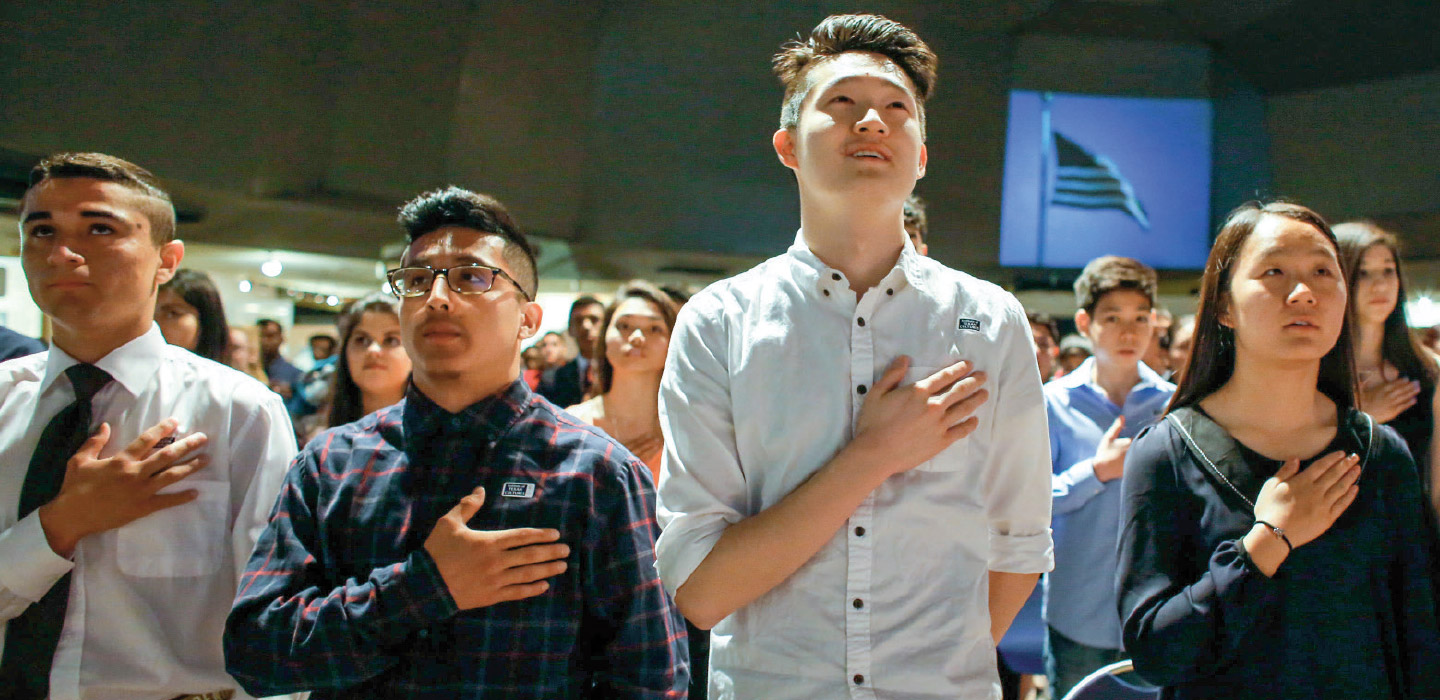If you were born in the United States, American citizenship is something you probably take for granted. You have what’s called birthright citizenship, meaning your citizenship is automatic.
It’s a different story for immigrants. Who among them get to be American citizens? That issue—long a matter of debate—has heated up recently in response to a series of executive orders issued by President Trump. These include orders to start building a wall along the U.S.-Mexico border (see Walled Off) and to temporarily block people from some majority-Muslim countries from entering the U.S.
Despite the current controversy, the U.S. has a long history of welcoming immigrants from all parts of the world, and many of them seek to become citizens. About 700,000 a year complete the lengthy process of becoming naturalized.
Applicants for citizenship must have immigrated legally and been permanent residents of the U.S. for five years; must not have committed any serious crimes; and must undergo identity and security checks. They also have to prove they can read, write, and speak basic English.
Finally, they must pass a civics test -covering U.S. government, history, geog-raphy, and culture. Applicants are asked 10 questions from a list of 100 and must answer at least 6 correctly to pass.
How well would you do? Find out by answering these questions from the actual exam. (That test has open-ended questions, but we’ve made ours multiple-choice.)

